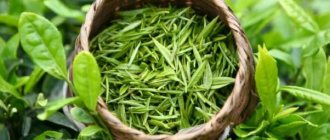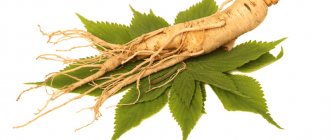Doctors often recommend that people who have low blood pressure drink green tea with lemon and sugar. After such a drink, the indicators become higher. All this is explained by the presence of substances such as caffeine and tannin in its composition. Thanks to them, blood circulation increases and the tone of the vascular walls increases. If the tea is also sweet, then glucose has an invigorating effect on the brain. In combination, all these properties help hypotensive patients feel much better, which cannot be said about hypertensive patients.
But the effect of green tea on indicators is short-lived. The body quickly removes it naturally.
Positive properties of this drink:
- kakhetin, which is contained in it, has an antioxidant effect, in addition, it strengthens blood vessels;
- tannin affects the body's immune system, strengthening it, especially stimulating resistance to infections;
- Green tea also contains quite a lot of vitamin C.
Of course, every drink, even the most harmless one at first glance, can cause harm to the body if drunk in excessive quantities. Green tea is one of these. Therefore, if you use it a lot, you may experience increased heart rate, sleep disturbances, and high blood pressure. Varicose veins of the extremities may also develop. But is it possible to drink green tea for high blood pressure?
Alkaloids cause an increase in tonometer readings. These substances are simple caffeine. In this case, it has various components. These are xanthine, nofilin, etc. All of them act on the body in such a way that blood pressure levels increase. In some cases, green tea abuse worsens chronic pathologies, including hypertension.
Green tea increases blood pressure, but at the same time, this drink can improve the patency of coronary and renal arteries.
Beneficial properties of green tea for hypertensive patients
Green tea lowers blood pressure through three main actions:
- Diuretic;
- Anticholesterol;
- Tonic.
Vessels cannot hold an infinite amount of blood. And its amount depends on how much a person drinks and how long the liquid is retained in the body. The more water you drink, the greater your blood volume.
There is excessive pressure on the vascular walls, which leads to an attack of hypertension. Green tea prevents stagnation by quickly removing excess fluid through the kidneys. Accumulated cholesterol also causes high blood pressure. Imagine a hose. The outer diameter remains constant, and the inner diameter gradually decreases as it becomes dirty.
The amount of water supplied remains the same. Then the walls of the hose experience excessive pressure and may even be damaged. Green tea clears the lumens of veins, arteries and capillaries from cholesterol plaques and keeps them healthy.
The tonic effect of the drink is to expand and strengthen blood vessels. Imagine that, with a constant amount of incoming water, the clearance of the hose suddenly increases. Then the pressure drops. And this is what a hypertensive patient needs.
Beneficial components of green tea
The beneficial properties of the drink are due to its chemical composition:
- Tannin. Gives a characteristic taste and strengthens the walls of blood vessels.
- Thein. This substance is a relative of caffeine. But unlike the latter, it is not harmful to the heart, because it acts gently and is quickly eliminated from the body. But during this time, theine manages to invigorate the body and improve cerebral circulation.
- Catechin is a natural antioxidant. Promotes weight loss, lowering blood sugar and eliminating other factors that cause the development of hypertension.
- Glutamic acid and other amino acids. These are small building blocks of our body, replacing old cells. Regular renewal of vascular tissue leads to maintaining the elasticity of the walls and reducing blood pressure.
Green tea contains vitamins:
- Carotene (provitamin A). Keeps the lumen of blood vessels clear.
- Ascorbic acid (vitamin C). Strengthens the walls.
- Thiamine, riboflavin and niacin (vitamins B1, B2 and B3). Participate in metabolic processes and reduce the amount of cholesterol.
- Tocopherol (vitamin E). Responsible for the elasticity of tissues.
This is interesting! In 1996, an experiment was conducted in China in which two groups of people took part. In the first one, it was allowed to eat unhealthy foods, but it was necessary to drink several cups of green tea. In the second, this drink was prohibited, but the subjects had to adhere to the rules of a healthy diet. As a result of the experiment, it turned out that the condition of the cardiovascular system was better in the first group. Their risk of developing hypertension was reduced by 50% compared to adherents of a healthy lifestyle.
Useful qualities of the drink
The product includes many useful qualities. The most common of them is considered to be antioxidant. Thanks to this, it affects the entire body. Frequent use improves skin quality and general condition. For colds and general poor health, green tea removes harmful compounds from the body, improving metabolism. The product also has an anti-inflammatory effect. It gives energy, eliminates apathy and depression, and relieves sleepiness. Therefore, it is extremely useful to consume it in the morning. Iodine and fluorine present in the composition neutralize heavy metal salts. The diuretic property of the drink eliminates swelling and removes excess water from the body, making the course of diseases of the genitourinary system easier. What inexpensive tablets can be found for high blood pressure, but are effective ? A free way is to drink green tea. It has a beneficial effect on the heart and blood vessels. In small doses, it reduces blood pressure in those who suffer from hypertension, and also reduces the risk of fatty plaques forming on blood vessels, increasing the strength of vascular walls. Iced green tea increases or decreases blood pressure – we’ll find out further.
Possible harm and contraindications
Green tea for hypertension should not be drunk in excessive quantities. Due to the high content of polyphenols, the drink can cause poisoning when consumed in liters. Other consequences of abuse include liver disease from intoxication and urolithiasis.
Contraindications to green tea for hypertensive patients:
- Stones in the kidneys and urinary organs;
- Insomnia;
- Gout;
- Peptic ulcers of the gastrointestinal tract;
- Lactation period;
- Alcohol intoxication.
Attention! To normalize blood pressure, but not harm your health, you need to take 1-3 cups of green tea. This corresponds to 200-600 ml per day.
Relevance
Tea can truly be called the national Russian drink.
Studies evaluating the effect of drinking tea as primary cardiovascular prevention are limited.
The authors of a new prospective cohort study assessed the association between tea consumption and the risk of atherosclerotic cardiovascular disease and overall mortality.
Types of varieties
Green tea was first produced in China. Today this country produces only elite varieties:
- Xihu Longjing. Hand pressed. Leaves a sweet aftertaste and the aroma is associated with an orchid. The color of the drink is yellow.
- Gunpowder. The curled leaves resemble pellets that “explode” during brewing. Good in combination with mint - just what hypertensive patients need.
- Bilochun. Tea made from tiny young tea leaves collected in early spring. It has a fruity taste and a pronounced floral aroma.
- Yun Woo. The drink is not for everyone due to its astringency and bitter aftertaste.
- Huangshan Maofeng. Tea leaves are newly opened leaves and buds. When brewed, they weaken the floral aroma. They have a nutty flavor.
In Japan, 100% of the tea market is occupied by green varieties. The most popular:
- Sentya. Combines sweet and bitter notes that pair well with Japanese cuisine.
- Rekutya. A variety suitable for daily use. A light citrus aroma complements the berry flavor notes.
- Gyokuro. To grow this type of tea, the bushes are artificially shaded. This creates favorable conditions for the accumulation of large amounts of tannin in the leaves. Namely, this substance strengthens blood vessels, helping to reduce blood pressure.
Georgian green tea is less popular, but in terms of taste it is ready to compete with Chinese and Japanese varieties. What does it cost just to collect “Bouquet of Georgia” and “Extra”. Varieties numbered 115 and 125 are more suitable for daily consumption.
How to choose good tea
To better assess the quality of the tea leaves, buy them in bulk. In doing so, pay attention to:
- Color, which largely determines the quality of green tea. It should be green, but shades can vary from dull to dark olive. In China, the best varieties have a pistachio color and a slight sheen of silver or gold. Do not buy tea that is too dark, because this is a sign of a violation of the production technology. This will affect not only the taste, but also the medicinal properties of the drink.
- Collection period. Find out when the tea leaves were harvested. If in the spring, then you can enjoy a soft taste with a floral, fruity or nutty aftertaste. Autumn leaves are astringent and have a lot of bitterness. Don't buy last year's tea. It can be distinguished by a large number of broken tea leaves from frequent transportation and carrying from place to place.
- Humidity. For high-quality tea it varies between 3-6%. If the indicator is higher, the shelf life of the product decreases. At 20%, the leaves can no longer be used to make a drink, because mold will form on them. This may be hazardous to your health. Dried tea leaves are also not suitable. They will turn to dust when brewing and ruin the taste.
If you decide to buy packaged tea, then the main criteria for choosing will be:
- Integrity of the package and box.
- Availability of a trademark and information about the country of origin and the date of harvest of the tea leaves. The packaging must also indicate: net weight, shelf life and storage conditions.
- Marking. Options: numbered from 1 to 7 (in order of decreasing quality). But the best tea is not designated No. 1, but “Extra.”
Attention! On the shelves you can see flavored green teas next to hibiscus. They are usually beautifully packaged and cost little. But even if the temptation is high, refrain from such a purchase. A good variety does not need flavorings: it already smells pleasant. You will not get any benefit from the drink.
Methods
The study included 100,902 adults from China who participated in the Prediction for ASCVD Risk in China (China-PAR) program. All individuals included in the study had lived in 15 Chinese provinces since 1998.
Information on tea consumption was obtained from questionnaires. Based on the amount of tea consumed per week, 2 groups were divided: drinking tea 3 or more times a week (habitual consumers) and never or rarely drinking tea (less than 3 times a week).
The researchers performed regression analyzes and calculated hazard ratios for atherosclerotic cardiovascular events and death.
Rules for storing green tea
- Air temperature 17-19 degrees;
- Humidity not higher than 70%;
- The product should not be exposed to sunlight. It is better if there is no light at all.
- There should be no strong-smelling foods nearby, because the tea leaves absorb odors.
- The best storage containers are ceramic or porcelain containers with tight lids.
- It is allowed to use boxes made of juniper, linden or birch.
- Do not store in paper or plastic bags, glass or plastic containers.
- The optimal shelf life is 1 year, maximum 2. Then throw it away: there is no benefit from the old drink.
Brewing rules
To get the maximum benefit and enjoy the taste of the drink, you need to know how to brew green tea correctly:
- Boil the water.
- Warm the teapot over the fire. If you pour tea in a cold container, the drink will instantly lower the temperature by 8-10 degrees. Then the beneficial substances will not be able to be released.
- For every 200 ml add 1 tsp. tea leaves and 1 more “for the teapot”. If your volume is 600 ml, then it will be 3+1=4 spoons.
- Fill with water cooled to 80 degrees.
- Leave the drink for 1-3 minutes and then pour it into cups.
This is interesting! Green tea has the unique ability to change its taste after each brewing. It can be tart at first and then develop floral notes. Therefore, the same tea leaves can be used as many times as long as it gives taste and aroma, but no more than 7-8 times. It is only important to comply with the following condition: each subsequent brewing should begin no later than 10-15 minutes after the previous one.
How to brew?
In order for the drink to be tasty and healthy, you need to brew it for a certain amount of time. If this time is less than 3 minutes, then the increase in pressure will be insignificant. If this time lasts 4-10 minutes, then such a drink can increase blood pressure by more than 20 mm Hg. Art. This is very dangerous for hypertensive patients at stages 2 and 3 of the disease.
Tea that has been steeped for more than 10 minutes is generally not recommended for consumption. It no longer contains useful microelements and vitamins, and there is a lot of caffeine. Therefore, if a person finishes a drink brewed in the morning, then it will not be beneficial.
Scientists have proven that 2-3 cups of the drink throughout the day, brewed in less than 3 minutes, will help keep blood pressure levels normal.
How to drink green tea for hypertension
Green tea is not a medicine. Its mild effect is long-lasting. There will be no effect from drinking the drink once. Requires daily use for 1-2 weeks. Only after this the tonometer will show improvement.
The minimum amount of green tea that a hypertensive person should drink to reduce blood pressure is one cup (200 ml). But you should not drink more than 3-4 cups (600-800 ml) per day, because this can affect the health of internal organs.
Count the amount of fluid consumed per day: it should not be more than 1.5 liters. Otherwise, the pressure in the blood vessels will increase.
Rules for drinking the drink for hypertensive patients
Doctors note that hypertensive patients need to consume about 1.3 liters of fluid per day. But it is also important to take into account liquid soups and juices. Hypertensive patients are not recommended to drink more than 2 cups of tea per day.
Many people know that bergamot has the property of lowering blood pressure, but in store-bought tea the taste of bergamot is achieved due to the flavorings in the composition. Therefore, you should not expect your blood pressure to drop due to this ingredient.
It is also recommended to buy only large-leaf tea, and rinse the leaves in warm water before drinking. In this way, some alkaloids are already neutralized. Also, the effect of caffeine can be mitigated with milk, that is, you can drink tea with it.
Of course, if a person has hypertension, and the blood pressure is currently elevated, then it is better not to drink tea. This can have a detrimental effect on your general condition. Especially at night, you should not drink the drink, as insomnia and excessive excitability may occur. At the same time, hypotensive people with low blood pressure need a cup of strong drink with sugar or honey.
Reviews
Ksenia, 53 years old: I’ve heard for a long time that green tea treats hypertension. With the hope that the problem would stop bothering me, I went to the store and bought the first tea leaves I came across. Imagine my disappointment when the pack was almost finished, and the pressure had never dropped below 140/90. Thanks to my neighbor, who, having learned about my illness, gave me a jar of Japanese Rekucha tea. I drank 3 cups every day, and my blood pressure returned to normal.
Zinaida, 69 years old: Everyone in my family is hypertensive: mom, dad, grandparents, aunts and uncles. Three relatives have already died from strokes. About 30 years ago it was hard for me to realize that a similar fate would await me. But one day I heard on TV that green tea for hypertension and for the prevention of high blood pressure is one of the best remedies. I promised myself: at least one cup a day, but drink it. The result is that, despite heredity, hypertension passed me by.
The benefits and harms of green tea, how to brew it?
Green tea is a perennial evergreen shrub reaching 10m in height. The plant has beautiful, long, dark green, oval-shaped leaves. The leaves contain supporting sclereids in their pulp. In the axils of the leaves there are fragrant flowers, collected in 2–4 pieces or singly. Flower leaves and bracts are arranged in a spiral. The fruit of green tea is a slightly flattened box, consisting of three leaves. Inside the fruit there are round seeds, dark brown in color.
The flowering period of this plant lasts from the end of summer to the last days of autumn. The plant bears fruit from October to December. Green tea plantations are located in China, India, Japan, South America and Africa.
Content:
Green tea composition:
This fresh, strong drink contains many chemicals, which is what determines the beneficial effects of tea. More than half a thousand components were found in its leaves, including calcium, fluorine, which is so necessary for the body, as well as magnesium, phosphorus and many others. Several hundred complex compounds of organic origin and most of the known vitamins were found in it. The particular benefits of green tea are due to the presence of the following compounds in it:
Caffeine
- this is the main alkaloid; its presence in tea gives strength and energy to our body, invigorates and activates the brain. However, regular tea does not contain caffeine, but its analogue called theine. The effect of theine is somewhat milder than caffeine, but it also activates the energy of the human brain, improves mood, and with it performance and activity.
Minerals
, contained in green tea, contribute to the proper functioning of all our organs. By preventing mineral imbalances, it strengthens the immune system and promotes excellent condition of nails, hair and teeth.
Catechins
- These are flavonoids, excellent antioxidants. Their effect is ten times greater than that of vitamins. Drink a cup of green tea throughout the day and your body will receive all the polyphenols it needs. A similar effect has been found in catechins in other natural foods, such as carrots, spinach, strawberries and broccoli. As an effective antioxidant, this product suppresses free radicals in the body, reducing the risk of cancer. Tea enhances natural immunity and destroys microbes, making it recommended for dysentery.
[Video] 8 beneficial properties of green tea:
Benefits of green tea
The benefits of green tea have been known for a long time. Moreover, this fact is recognized not only by folk healers, but also by official institutions. The most venerable pharmaceutical companies, along with cosmetics manufacturers, use this unique, miraculous plant in their products. The beneficial properties of green tea are actively used in nourishing creams and dietary supplements.
Experience the effect of this wonderful product yourself - wash your face in the morning and before bed with a freshly brewed drink, you will feel an improvement in skin tone. It is very useful to wipe the neck and face area with pieces of frozen green tea. Repeat this procedure regularly, and you will be in a cheerful and cheerful mood. Drinking green tea will help you get rid of unhealthy breakouts on your skin as well as other such negative symptoms on your face and body.
Green tea can make you beautiful. If you have far-reaching plans for the evening, it will help you become simply stunning. This composition will awaken the beauty of your skin. Stir together approximately 20g plain flour, egg yolk and strong brewed tea. Apply for 15 minutes. Apply this mixture onto your face, rinsing thoroughly afterwards. Your skin will acquire a pleasant color, straighten and tighten. You can enhance this effect with a piece of iced green tea.
Black tea should not be ignored; its benefits are also obvious. During our youth, our mothers did without tanning salons to make their skin darker. To do this, pour a little water into black tea, put it on the fire, bringing it to a boil, and then infuse it, waiting for the liquid to cool. Rub the skin with this infusion twice a day. You will become tanned without sunbathing.
But let's get back to green tea. This drink normalizes digestion processes. By constantly drinking green tea, you will make your internal organs - liver, intestines and stomach - work faster. You will also notice an additional effect - healthy gums and teeth. You are no longer afraid of stomatitis. All this is facilitated by the amazingly beneficial components that tea is rich in. The antioxidants present in tea are an amazing preventative against cancer, which has become a real scourge. The tea drink contains the required amount of a well-known antioxidant – zinc. This element is necessary for strengthening nails, hair growth, and helps heal wounds, for example, cuts.
Green tea preparations have a diuretic effect, but due to the stimulating effect of the plant, it cannot be used as a diuretic.
Green tea is the best remedy for fatigue. Green tea infusion is used as an antimicrobial agent for dysentery. This tea is a means of preventing urolithiasis and gallstone diseases. Green tea maintains body tone and quenches hunger.
Due to its vitamin C content, green tea helps cope with many cancer diseases. Vitamin P contained in green tea makes the walls of blood vessels stronger and more elastic.
The beneficial properties of green tea are due to the fact that it contains large quantities of various bioactive substances, microelements and vitamins. During the production process of the product, tea leaves do not undergo complete oxidation (fermentation), due to which they retain their green color. Thanks to gentle drying, the beneficial substances and vitamins contained in the leaves are not destroyed, unlike black tea.
What are the benefits of green tea?
This healing drink has a tonic effect on all body systems. It contains caffeine and tannin, which stimulate the mental activity of the brain. It is useful to drink to prevent blood clots, it lowers blood sugar levels, protects the liver from toxins and alleviates the symptoms of stage 2 diabetes.
This drink is recommended to be consumed after suffering from colds for faster recovery of the body. It is said to be able to speed up the healing of wounds and burns. Regular consumption of tea leaves infusion relieves the symptoms of certain skin diseases.
[Video] Scientific facts about the benefits of green tea:
Harm of green tea
Green tea contains substances that have both positive and negative effects on the human body. In addition, green tea contains theophylline and theobromine, which have a stimulating effect on the human nervous system. That is why an infusion of tea leaves is not recommended for people with increased excitability and insomnia.
Strong drink is definitely harmful if:
- With an unstable nervous system and diseases of the cardiovascular tract.
Of course, theine is harmful to them. But tea is rich in more than just theine; it contains substances that actively influence these systems, which causes its harmful effects, for example, due to theobromine.
- During pregnancy.
It interferes with the natural breakdown of folic acid, which is so vital for the developing brain of the unborn baby. All this is due to the content of a large dose of a chemical drug with the unpronounceable name “epigallocatechin gallate”. Let us again mention caffeine, which is contraindicated for pregnant women. It has not been proven for certain whether black tea prevents the breakdown of folic acid, but it does contain caffeine. Just a few cups of any tea per day can cause the birth of a child with low birth weight, stimulate premature birth with possible fetal death.
- At a temperature.
Tea contains theophylline, which can increase a person's temperature. Therefore, a patient with a fever, drinking green tea, will worsen his condition even more.
- For stomach ulcers.
Tea is more likely to be contraindicated than actually harmful. Strong tea, and green tea in particular, increases the acidity of gastric juice, and this, in turn, interferes with the natural healing process of wounds. As a result, the patient's condition may worsen significantly.
- With an unhealthy liver.
Here we should specifically mention green tea. Some compounds contained in tea are extremely taxing on the liver, especially if you drink this drink in large quantities. But black tea contains very few of these compounds.
- Leaching of beneficial microelements.
Tea removes metals from the body. Again because of theine.
- For skeleton and bones.
Tests carried out by scientists on animals showed unexpected results. It turns out that tea negatively affects the skeleton and, in particular, the density of bone tissue. To be fair, we note that such studies have not been done on humans.
- Formation of urea.
Any tea is rich in purines, which synthesize urea during absorption. It is known to be poisonous and is difficult to remove from the body. Its salts synthesize crystals that develop gout. In addition, green tea disrupts the condition of people suffering from arthritis and rheumatism.
- For teeth.
Although the opposite effect was mentioned here, there is evidence that tea has a detrimental effect on tooth enamel. What to believe? There’s no definite answer, but it’s hardly worth rinsing your teeth with tea when brushing.
- Iron absorption.
Caffeine interferes with the absorption of essential iron.
Harm of tea from improper use:
- It has already been said that old tea is harmful. When stored for a long time, many purines accumulate in it. Although they are already formed at the time of brewing, over time the processes of their formation increase and after half an hour the tea is no longer worth drinking.
- The combined consumption of tea and alcohol causes intense formation of aldehydes, which harm the kidneys.
- Excessive consumption of the drink causes intoxication, headaches, nausea, and dizziness.
- An extremely hot drink should not be consumed in large doses. Therefore, if you constantly drink overheated tea, burns to internal organs will inevitably occur. They become deformed, shrink painfully, and cracks form in the tissues. These types of burns certainly increase the risk of cancer. It should be noted here that this is not a harm to tea as such.
- Brewing tea with boiling water makes it practically useless, since it destroys the most valuable substances. But there is a significant increase in harmful elements, the same purines, for example.
Uses of green tea
Green tea is used for atherosclerosis, hypertension and various poisonings, even alcoholic ones. Green tea is a strong antioxidant that helps fight obesity, weakness and fatigue. Green tea preparations are also used for diarrhea, sunburn, caries and in various diets. Green tea is able to absorb about 90% of the isotope, preventing it from negatively affecting the human body. Thanks to its medicinal properties, green tea stops the growth of cancerous tumors.
Tooth decay is the most common problem for many teenagers and adults. Green tea quickly and effectively destroys bacteria in the oral cavity, which prevents the formation of caries.
Green tea reduces cholesterol in the body, makes blood vessels more elastic, normalizes lipid metabolism, accelerates fat metabolism and prevents the body from aging quickly.
Green tea is an excellent diaphoretic. And if you mix it with lemon, the effect will be even better. In addition, green tea removes toxins from the body.
Green tea infusion for atherosclerosis, high blood pressure and high cholesterol.
Take 3 grams of dry green tea and rinse it with boiling water - this is necessary to reduce the caffeine content in it. Next, add 100 ml of boiling water to green tea and steep for about 10 minutes. Take this tea one glass at a time three times a day. But, given the fact that a person takes green tea, it is necessary to drink no more than 1.2 liters of liquid per day (this includes 3 glasses of tea itself).
Green tea infusion for dysentery.
Take 25 grams of crushed plant material and pour 500 ml of boiling water. Leave everything to brew for half an hour. Then put the composition on low heat for 1 hour. After this, you need to strain the finished infusion. We store this drink only in the refrigerator. Take 2 tablespoons of infusion 30 minutes before meals 4 times a day.
Tea for indigestion.
Many people suffer from this disease. Green tea will help cope with it. This plant contains bactericidal substances that destroy pathogens in the intestines and stomach. To get rid of an upset stomach, it is enough to drink strong green tea for 2-3 days in the morning, lunch and evening - and the illness will go away.
Infusion for vitamin deficiency.
Take 3 grams of crushed tea and pour 100 ml of boiling water, leave to brew for 10 minutes. After that, add 1 teaspoon of rosehip syrup to it. Every day after meals we take this infusion 100 ml three times, only warm.
How to brew green tea?
In order for green tea to be beneficial and give the effect expected from it, it must be brewed correctly.
Three factors should be taken seriously:
- The most important of them is water temperature and its quality.
- A portion of brewed tea.
- Duration of the welding process.
Optimal combinations of these three parameters will give an excellent drink. Let's take a closer look at this.
- 1. How to determine the optimal portion of tea?
Here you need to take into account the size of the tea leaves, as well as the thickness of the brew you want to obtain. On average, take one teaspoon per full glass of water.
- 2. How long does the brewing process take?
This parameter depends on the size of the tea leaves, as well as the desired tonic effect - intense or slightly delayed. Please note that theine, which causes the much-desired tonic effect, dissolves in the first minute of the brewing process. Then the tea leaves are predominantly saturated with tannins. Only after them does our body absorb the theine itself. Therefore, when you are expecting an intense boost of energy from a tea ceremony, the tea leaves should not be left in the brew for more than one to one and a half minutes. On the contrary, if you want a not too intense burst of strength, but a long-lasting one, leave the brew a little longer than indicated in the instructions. But keep in mind that the tea will be slightly bitter in this case. By experimenting with this indicator, you will find options that are acceptable for each specific case.
- 3. What kind of brewing water should I use?
As with most drinks, spring water is the best option. Since not everyone lives near a spring, you can use filtered water. If there isn’t even one, then at least give the tap water time to settle for a little while. Purchased distilled water is not very suitable for brewing. Also, you should not re-boil water for tea. In general, it is unacceptable for water to boil over, since brewing tea with fresh, boiling water is under no circumstances acceptable!
- 4. Which utensils do you prefer for brewing green tea?
The best cookware is one that holds a high temperature for a long time. Clay or porcelain teapots work well. The Japanese tea connoisseurs use a teapot made of enameled cast iron, but the Arabs prefer silver utensils. The dishes should not have any foreign odors. Pre-rinsing the dishes with boiling water will help a lot for this. This is also necessary so that a cold kettle does not collect the heat of the water, which was intended for brewing.
When, after several brewing procedures, a yellowish coating appears on the inner surface of the kettle, do not rush to remove it. This film is a kind of protection against unfavorable external factors. This may be alarming to guests who are not familiar with such subtleties of the tea ceremony, but I think you will find a way to explain the situation to them.
- 5. Direct brewing procedure.
The kettle used for this purpose must be preheated over an open fire. Only then pour in the tea. The spoon should be dry and clean. The teapot is wrapped in a soft cloth. Gourmets of tea ceremonies use special beautiful things for this. The kettle is kept warm for a couple of minutes. The tea leaves are poured into one third of the container with hot water. Leave for another 2-3 minutes, after which the kettle is topped up to capacity.
Cups, preferably also made of clay or porcelain, intended for the tea ceremony, are rinsed with hot water before use. After all, hot tea poured into a cold cup quickly cools down. The total duration of the brewing procedure is on average 3-4 minutes. The drink is poured into cups in small, equal volumes, so the tea tastes the same for all guests.
- 6. Sometimes tea is prepared in the cup itself
(there are also amateurs) add no more than one tsp. tea leaves This drink is infused for about 2 minutes. The appearance of yellow-brownish foam on the surface of the kettle means the correct cooking mode. There is no need to remove the foam; it is simply stirred in a cup with a spoon. Also, do not forget to warm up the cup itself in which the tea is brewed.
- 7. How many brews are allowed and what to drink tea with?
It is generally accepted that sugar is the enemy of green tea. It is better to eat honey for dessert, and if it is not available, dried fruits. Secondary high-quality tea is brewed up to seven times. However, it is better not to do this more than twice. We take a tiny mini-teapot, brew it one at a time, and then repeat it again. The secondary welding time increases. The initial brew has the most tart aroma. Next, the actual taste of the tea begins to reveal itself.
The recommended brewing water temperature is around 80-90 °C. Without a thermometer at hand, determining the appropriate temperature is quite simple. You need to open the lid of the kettle and when steam starts to rise, bring your hand to it. The steam should not burn your hand. This temperature will be optimal. Learn once and for all - boiling water destroys most of the beneficial substances in tea, making this drink useless!
Is it always okay to drink green tea?
Many people drink this healing drink, thinking that it quenches thirst well. For example, in Central Asia they drink it hot while working in the fields, but this is a big misconception. Infusion of tea leaves is a strong diuretic, and drinking it during the hot season, a person thereby dehydrates his body. In addition, excessive consumption of tea leaves can lead to deterioration of the nervous system.
Caffeine in green tea
Small doses of caffeine with moderate consumption of tea leaves made from green leaves tone up, help relieve fatigue, and increase a person’s physical and mental activity. However, with all the beneficial effects of this noble drink on the body, we must not forget about its harm. It is because of caffeine that abuse of green tea is not recommended for people suffering from cardiovascular diseases. This can lead to various complications.
Green tea with milk
This healing drink, mixed with milk, perfectly cleanses the kidneys, strengthens and tones the body. This “cocktail” is also very popular among Chinese centenarians. Milk neutralizes the effects of caffeine and other alkaloids, and therefore you can drink this drink without fear for your health. Although this is a high-calorie product, the extra calories in it are compensated by calcium. An interesting study was conducted in which several women drank a glass of milk daily. Oddly enough, in the end, in addition to all the advantages of such a diet, in the form of strengthening nails, teeth and bones, there was also a reduction in the weight of the subjects. According to the organizers of the experiment, this phenomenon is associated with calcium deficiency. Subsequently, scientists developed a special diet based on green tea with milk, and its effectiveness has already been proven experimentally. The cleansing processes in the body caused by drinking tea, in combination with a dairy diet rich in microelements, promotes weight loss without any harm associated with depletion of the body.
What is the essence of such a diet?
There are two methods: soft and radical. When you strive for a forced result and do not experience stomach problems, strict measures are applied. You should eat only a few fruits per day, giving up all other foods. We drink green tea with milk. Sugar, if the need for it is irresistible, replace it with a spoonful of honey. In addition to tea with added milk, you need to drink at least one and a half liters of plain water. If all this is very difficult for you, it means that you are still indecisive in your aspirations to lose weight.
But let's say that your goal is only to cleanse yourself of toxins. Then a fasting day is what you need. This measure, of course, is much softer - you can endure it for just one day. But you still have to forget about regular food on such a day in order to allow the tea to have its effect.
Let's consider ways to use the miraculous drink. There are also only two of them, and here are what they are.
Method one:
Gourmets assure that the highest effectiveness of the tea-milk diet will be achieved if the tea leaves are prepared directly with milk. That is, no water is used at all. Dry tea is poured with heated milk. In this case, plain water is drunk only separately from the drink.
Method two:
This option is considered simpler, but not as useful. Boiling water and milk are mixed in equal parts by volume, and tea leaves are poured into this mixture. This type of tea is greener in color, but its taste is not as milky.
We also note that green tea with milk can be used both hot and cold. This will not make him any less useful. Green tea is extremely popular among athletes. Counting on the miraculous properties of tea, it is necessary to consume it not only after training, but also before it. The range of beneficial effects of tea is enormous. Connoisseurs of bodybuilding, fitness, and simply people with an active lifestyle include it in their diet. But low blood pressure is a significant reason to avoid green tea. After all, one of its most important functions is the fight against hypertension.
Green tea for weight loss
The medical community has not yet made a clear decision whether green tea has an effect on weight loss, although many people believe in the effectiveness of weight loss using this product. And this method of losing weight has recently become fashionable. It is believed that this infusion enhances metabolic processes in the body and accelerates the removal of fat, it is a powerful antioxidant and helps strengthen blood vessels, increasing their elasticity.
If you feel slightly hungry, then instead of a snack, it is better to drink a cup of tea leaves infusion without sugar. With regular use, you can lose 2-3 kg, and in combination with a diet, stunning results are achieved. Let's remember the main tea gourmets - the Chinese and Japanese. It is very difficult to find a fat man among them. What is the ability of tea to get rid of excess weight? It turned out that among the beneficial qualities of green tea, those that can cause weight loss predominate. The drink perfectly cleanses the body, improves the functioning of the stomach and intestines, removing toxins, and increases metabolism. The positive effect of tea on accelerating the processes of fat breakdown has been proven. This drink allows you to forget about hunger.
Let's consider further how to more effectively use the beneficial qualities of green tea for people who want to get rid of excess weight.
- 1. Half an hour before meals, just drink some tea (however, we note that drinking green tea before meals is harmful to the stomach. If you decide to drink it before meals, then only 15 minutes before meals). This is a great way to lose weight. For a one-time dose, brew a teaspoon in 300 g of water, leave for about two minutes and drink without sugar. This intake will somewhat reduce the feeling of hunger, but at the same time speed up the processes responsible for digesting food and burning fat. It can be recommended to add plants to regular tea that also promote weight loss. Among them, for example, hibiscus, which is distinguished by its mild laxative and diuretic effects. Hawthorn fruits, which absorb fats and lower cholesterol, are also suitable. Another addition is finely ground cinnamon. With it, tea acquires a refined, pleasant taste, and metabolism will increase significantly. Finally, even a brutal appetite is suppressed by a spoonful of flax seed eaten with a cup of green tea.
- 2. Add green tea to your dinner table. There is one recipe that will probably seem original and even somewhat strange to you. Try grinding the tea into a fine powder with a coffee grinder. Eat a spoonful of this powder during any of your meals. You can drink it with water. You don’t even have to eat the powder in its pure form, but, say, sprinkle it on cold snacks, for example, salads, cereals, Olivier dishes. Just don’t add it to various soups or cocktails that contain a lot of liquid. In such dishes, the powder will simply dissolve and its effect will be significantly lower or simply weakened. This recipe came to us from China. And in this country people know how to maintain their figure.
- 3. If you are already on a diet, then tea is excellent to improve the effect. In general, the best nutritionists recommend drinking green tea as often as possible when losing weight. Eating fruits and vegetable dishes helps you quickly lose weight. At the same time, reduce the amount of sweets and flour products in your diet. Replace fried meat using fats with boiled meat. Try to add less salt and especially sugar to your food. But all kinds of cereals - buckwheat, rice - should become welcome on your table. Of course, also in reasonable quantities. And remember, drink green tea regularly, as there are no restrictions on its intake when losing weight. Now let's talk about the most successful combinations of diets and green tea.
How does green tea affect weight loss?
Accelerating metabolic processes is not the only weight loss factor in tea’s arsenal. There are several more useful functions in this direction, we list them:
- mild diuretic properties, respectively, promoting the removal of excess fluid. Although milk does not appear among all the products that are usually used in conjunction with green tea, this ceremony can be bypassed for weight loss purposes. By adding a little skim milk to tea, you can dramatically increase the diuretic effect, and more fluid will be removed. This remedy is also a good prevention of swelling of the legs and feet.
- polyphenols, contained in excess quantities in tea, enhance the body's heat exchange through the effective processing of deposited fats. According to scientific research, drinking several cups of tea a day can increase the amount of fat burned by almost one and a half times.
- A decrease in blood sugar also favors weight loss, because it helps you not feel hungry ahead of time. Drink just a cup of tea before meals, and lunch will seem much more satisfying, which means you can eat less. Those hearty meals, as usual, are also an ally in the fight against excess weight.
The question may arise, how long should you keep green tea as an essential component of your diet?
Literally two weeks will be enough for this; the result of the tea diet will be the body’s habit of healthy eating and a moderate diet. You will receive a double benefit - first you will get rid of excess fluid, and only then fat will be utilized. By accustoming your body to a healthy diet, you can sometimes treat yourself to non-diet foods without fear that this will lead to extra pounds of weight.
Green tea extract
This extract is made from the green, non-fermented leaves of the plant. It is used in the cosmetics and food industries. In cosmetology, masks, creams, shampoos and much more are produced based on it. Such widespread use of this product is due to the fact that preparations made from tea leaves have a beneficial effect on preserving the youth of the skin and its beauty. In the cosmetic field, the extract is used as a preservative, antioxidant, stabilizer of natural dyes and as a deodorant.
Green tea extract nourishes and moisturizes the skin, improves and strengthens its very structure. It also prevents skin aging, enhancing its protective functions, and at the cellular level has an overall positive effect. In the food industry, green tea extract is used as a natural antioxidant to prevent the oxidation of oils and fats. It is a stabilizer for a number of unstable and rapidly oxidizing compounds.
Contraindications to drinking green tea
Although green tea has many beneficial properties, it should not be consumed in excessive quantities. It is generally contraindicated for people with hypotension, since green tea lowers blood pressure. It is also better for people with ulcers not to use green tea preparations.
People with insomnia are also not recommended to indulge in green tea, because it contains caffeine, which stimulates the nervous and cardiac systems.
If you have drunk alcohol, then forget about green tea! If alcohol and green tea are consumed at the same time, aldehydes are formed, and this will have an extremely negative effect on the kidneys. It is not advisable to use green tea preparations on an empty stomach.
Author of the article:
Sokolova Nina Vladimirovna |
Herbalist Education: Diploma in General Medicine and Therapy received from the University named after N.I. Pirogov (2005 and 2006). Advanced training at the Department of Herbal Medicine at the Moscow People's Friendship University (2008). Our authors











